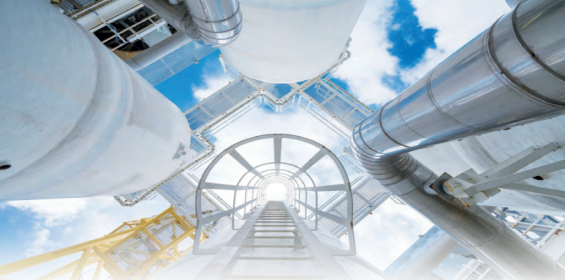Decarbonising petrochemical refining
Published: 20 April, 2023
Petrochemical processes have traditionally been heated with fossil fuels, but pressure is building to mitigate carbon dioxide emissions and advance long-term decarbonisation goals. Fossil fuel heated processes leave big shoes to fill when it comes to thermal processes, so electric process heaters often raise two big questions: how big can an electric heater be? And what is required to maintain proper control of large electric heaters? Dennis Long, Chief System Designer at industrial electric equipment manufacturer Watlow, explains further
The technology behind process heaters has changed dramatically in the last ten years. This is good news for the industry, as electric heaters must be able to provide the same or improved performance that petrochemical engineers have come to expect from fossil fuel powered heaters.
Electric process heaters Vs fossil fuel burning heaters
To even consider replacing fossil fuelburning heaters, we need to have a clear understanding of the current capabilities of electric process heaters. For instance, replacement does not make sense if electric heaters don’t come with the size and power required to heat processes that currently depend on fossil fuels. Many of those processes would require larger electric heaters well above the common one-megawatt (MW) variety such as fluid catalytic cracking (FCC) heaters that require between 150 to 200 MW of power.
With equipment of this size, a single vessel can have two heat exchanger bundles. Such a setup can produce a single process vessel with a 15 MW duty rating or more. The few suppliers providing electric heaters at this scale can raise or lower the duty rating as technical requirements dictate. This kind of size and power presents a viable alternative for operations currently fired by fossil fuels.
Besides reducing the use of fossil fuels, electric heaters and heat exchangers have other well-documented advantages including less thermal lag, safer operation due to no fossil fuels to burn or combust and smaller overall footprint.
Maintaining control
Most engineers have never seen electric process heaters and heat exchangers of these sizes or capabilities. So, naturally, some of the most common questions about larger process heaters have to do with control, including what additional elements are needed to ramp up the heater and how that affects the existing electrical system.
Just because larger electric heaters have not traditionally been used to heat all processes in the petrochemical industry does not mean that the technology is untested. In fact, it’s far from it.
Field-proven power switching devices have been used for low voltage electric process heaters and electric medium voltage motors across industries for years, and the ability to control voltage is well established.
Programmable logic controllers (PLCs) bring heaters online in ways that do not cause problems for other devices connected to the same power source. The heater and controller are part of one closed-loop system, which streamlines integration and yields more control over the entire system. This technology’s tried and true nature in other applications reduces the risk for petrochemical process heating.
New tech driving the energy transition
It’s worth considering some of the technologies that make electric process heaters and heat exchangers promising candidates for replacing traditional heaters. Heaters with Continuous Helical Flow (CHF) technology are playing a critical role in making large electric process heaters more robust and economical.
CHF ensures the baffles with the heater do not exist as discrete elements, but rather as a single continuous spiral winding around the interior of the shell side of the heater. This forces the flow to be rotational and helical, resulting in an even better heat transfer coefficient per unit pressure drop. This means heaters with CHF technology do not have dead zones or areas with insufficient flow. As there are no disruptions to flow, fewer hotspots can develop, subsequently reducing fouling rates.
For example, a single removable Watlow HELIMAX heat exchanger bundle is said by the manufacturer to be able to supply up to five megawatts of power duty range, even with a smaller footprint, than fuelbased heat exchangers. Combine this efficiency with the reduced need for maintenance to address coking, and you have a product that increases productivity even as it contributes to decarbonisation efforts.
Furthermore, it’s crucial to have fast, reliable control systems for all larger, modern heat exchangers, especially in petroleum processing, where errors can be extremely costly. Engineers are now beginning to realize two things. Firstly, there are far more opportunities to use electric process heating systems with far fewer size constraints than energy and environmental engineers previously imagined and secondly, the control of these megawatt size heating systems is demonstrated with precise control of process and skin temperatures.
The industry must break down barriers towards energy transition to provide clean, efficient and reliable ways to electrify processes traditionally heated with fossil fuels. Working with a reliable partner to electrify process heating systems is one of the easiest ways to progress towards climate action goals without interrupting productivity or profitability.
https://www.linkedin.com/company/watlow/







